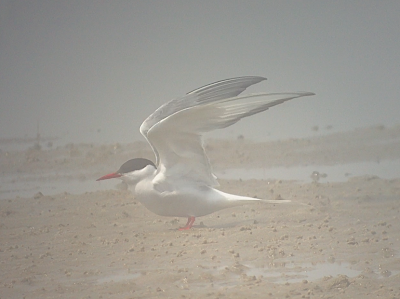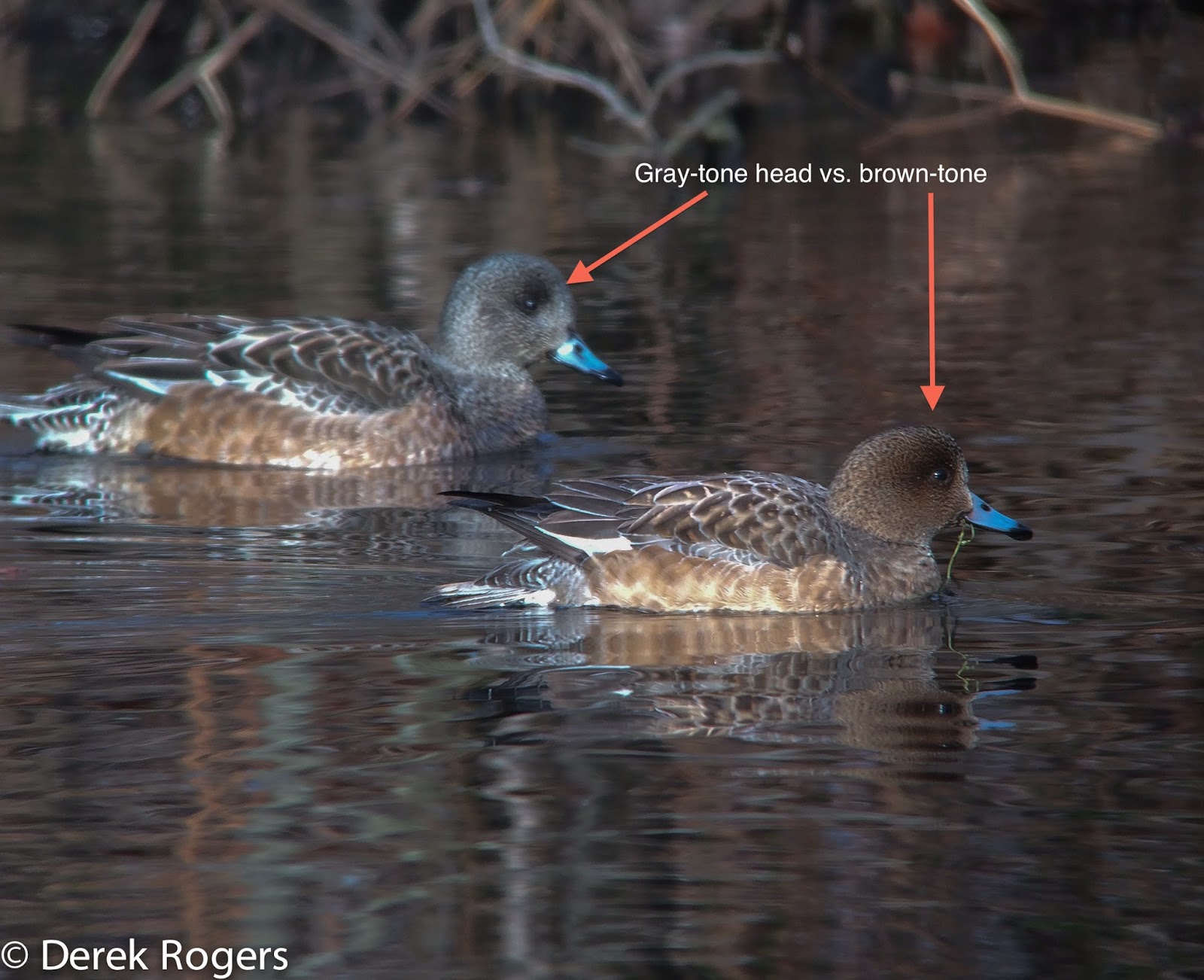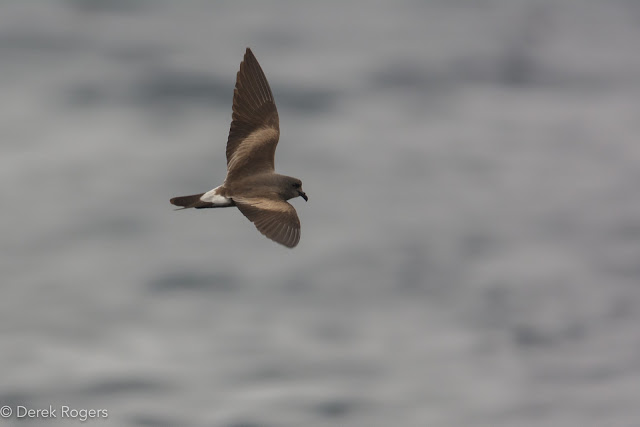Weekend Highlight - Arctic Tern
 |
| Arctic Tern - Cupsogue Beach C.P., 5/20/13 - Note many good field marks captured in this image. Thin black trailing edge of outer primaries, relatively short, deep red bill, short legs and an extensive black cap (image captured with an iPhone and Meopix Adapter through Meostar S2 Spotting Scope). |
 |
| Arctic Tern - Cupsogue Beach C.P., 6/1/13 - another adult-type bird. Note the uniform gray primaries, extensive black cap and a deep red bill showing a bit of a dusky tip. Also notice the small white gap between the upper mandible and black cap, usually more broad on Common Tern (Image captured with an iPhone and Meopix Adpater though a Meostar S2 Spotting Scope). |
- Bill Color - A deeper red toned bill (some showing a slight dusky tip). Arctic Terns generally show a shorter bill compared to their other Sterna counterparts but this is sometimes difficult to judge in the field.
- Head & Face - Rounder headed with black cap extending further down past the eye. White facial feathers between the upper mandible and black cap may appear as a narrow white line. The line or gap may appear more broad on Common Tern.
- Underparts - darker gray throughout underparts, although in bright conditions this will not always be so apparent. I have noticed that this feature seems better viewed when the bird is in flight.
- Leg Length - Arctic Terns will appear short-legged. Another caution that is dependent upon the contour of the ground in which it stands. Other Sternas can appear this way if they’re standing in a small divot, ditch, soft substrate, etc.
- Tail Length - Outer tips of tail feathers extend beyond wing tips
- Underwing Pattern - this is a great feature that can be noted in all plumages of Arctic Terns and separates it from the others. The pattern of the trailing edge of the 7-8 primary wing feathers lends the effect of a dark, sharp edge. Commons appear more blotchier and thicker.
- Upperwing Pattern - Uniform gray throughout. When sitting, the birds primary extension will appear uniformly gray.
- Flight - Said to have a more buoyant, effortless flight.





Comments
Post a Comment